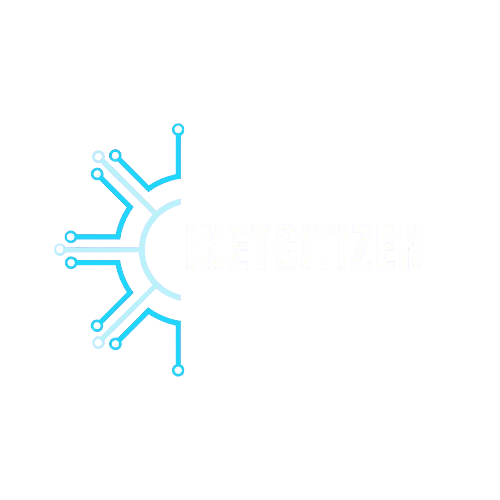The Role of Appointment Setting in a Financial Advisor’s Growth Strategy
Appointment setting for financial advisors is one of the most powerful methods to maintain a steady stream of potential clients. It bridges the gap between prospecting and relationship building, allowing advisors to turn leads into meaningful conversations. In an industry built on trust and credibility, securing appointments with the right prospects helps lay the foundation for long-term partnerships. However, financial advisors often struggle to consistently schedule qualified meetings due to time constraints, ineffective outreach, and unclear strategies. Unlike cold calling, modern appointment setting focuses on building authentic connections, understanding client pain points, and presenting tailored financial solutions. When done correctly, it becomes more than just booking a meeting—it’s the start of a relationship based on value.
Building a Systematic Approach to Appointment Setting
Establishing a process-driven approach ensures that every step in appointment setting for financial advisors contributes to business growth. Advisors who operate with structure can better identify where their time is best spent and what type of outreach yields the highest return. Setting measurable goals and tracking key performance indicators (KPIs) helps maintain focus and accountability. By defining how many calls, emails, or LinkedIn messages are needed to reach a desired appointment quota, advisors can refine their approach more effectively. Time blocking is another essential technique—dedicating specific hours each week to prospecting prevents procrastination and increases productivity. Leveraging a customer relationship management (CRM) system also plays a vital role, helping advisors organize contacts, schedule follow-ups, and monitor conversion rates. A systemized method not only saves time but also creates predictable results that can be scaled as the business grows.
Identifying and Attracting High-Quality Leads
Finding the right audience is at the heart of effective appointment setting for financial advisors. Not all leads are equal, and understanding who fits your ideal client profile makes every outreach more purposeful. Begin by defining clear demographic and psychographic criteria—age, income level, career type, and financial goals all influence the likelihood of conversion. Researching prospects beforehand allows you to personalize outreach and show genuine interest in their financial well-being. Social media platforms, particularly LinkedIn, serve as excellent tools for identifying and connecting with professionals who match your niche.
When attracting leads, focus on these strategies:
- Leverage referrals: Ask existing clients for introductions to people who may need your services.
- Share thought leadership content: Post financial insights or videos that demonstrate expertise.
- Use email segmentation: Tailor messages based on different audience segments.
- Track engagement: Monitor who opens emails or interacts with your content to prioritize follow-ups.
By combining research, technology, and personalized communication, financial advisors can consistently fill their calendars with prospects who are both qualified and interested.
Crafting the Perfect Outreach Message
The first impression you make through your outreach determines whether a potential client will engage with you. In appointment setting for financial advisors, your messaging must balance professionalism, empathy, and clarity. A strong outreach message should quickly communicate who you are, why you’re reaching out, and what value you can provide. Avoid long, generic introductions that sound like sales pitches. Instead, focus on the prospect’s needs and challenges. Mention a specific goal they might have, such as retirement planning or wealth management, and position your expertise as a helpful resource.
Here are essential elements to include in your outreach:
- Personalization: Address the recipient by name and reference something specific about them.
- Relevance: Explain why your message is timely or beneficial.
- Value: Offer a tangible reason for them to meet with you—such as a free portfolio review.
- Clarity: End with a simple, action-oriented request for an appointment.
By applying these principles, advisors create messages that resonate and increase response rates significantly.
Leveraging Technology to Simplify Appointment Booking
Technology has transformed how financial advisors schedule appointments. Gone are the days of endless back-and-forth emails trying to find a suitable meeting time. Online scheduling tools now allow prospects to book directly through a shared calendar link, creating convenience for both parties. Integrating these tools with your CRM ensures that all appointments and notes are automatically logged for easy tracking. Automation also helps with reminders, follow-ups, and confirmations—freeing up time for advisors to focus on client interactions.
Some recommended tools and practices include:
- Scheduling platforms: Tools like Calendly or Acuity streamline the booking process.
- CRM integration: Systems such as HubSpot or Salesforce maintain client data and activity logs.
- AI chatbots: These assist with instant responses and qualification of potential leads.
- Security compliance: Ensuring client information remains private through encrypted communication.
By combining automation with a personal touch, advisors can maintain professionalism while improving efficiency.
Nurturing Leads Before and After the Appointment
Nurturing is a vital step that ensures prospects feel valued before, during, and after the appointment. Financial advisors should always prepare by researching the client’s financial situation and potential needs. Sending a short confirmation email or reminder adds a professional touch and reinforces reliability. During the meeting, focus on listening rather than selling—ask open-ended questions that help uncover financial goals, challenges, and motivations.
After the appointment, follow-up is where true relationship-building happens. Send a thank-you email summarizing key discussion points and next steps. Offer educational content or resources that support the client’s goals. This shows you’re invested in their success and builds trust over time. By nurturing every lead properly, advisors can transform one-time meetings into lifelong partnerships.
Training and Outsourcing Appointment Setting
Not every financial advisor has the time or skill to handle appointment setting efficiently, which is why outsourcing or hiring a dedicated appointment setter can be a smart move. A skilled appointment setter understands communication nuances and knows how to qualify leads before they reach your calendar. When hiring, look for someone who can represent your brand professionally, understands your services, and is trained in compliance standards for the financial industry.
If you prefer to train an internal team, provide them with:
- A clear script framework for calls and emails
- Access to CRM systems for tracking and reporting
- Regular feedback sessions to refine their communication style
- Training on financial products to enhance their understanding of your services
Outsourcing appointment setting can free up your time to focus on relationship management and advisory work, while ensuring that your pipeline continues to grow.
Measuring Success and Improving Performance
Measurement is key to understanding how well your appointment setting strategy performs. Financial advisors should track metrics such as the number of contacts made, appointments scheduled, and meetings that convert into clients. This data reveals which channels and messages are most effective, allowing for continuous improvement. Gathering client feedback also helps refine communication and service delivery.
Some important metrics to monitor include:
- Conversion rate from lead to appointment
- No-show and cancellation rates
- Client acquisition cost
- Revenue generated per booked meeting
Regularly reviewing these numbers helps advisors fine-tune their processes, identify weak spots, and scale what’s working best.
Overcoming Common Appointment Setting Challenges
Even the most experienced financial advisors face obstacles in maintaining appointment consistency. Common issues include unresponsive leads, rejection, and time management struggles. To overcome these challenges, persistence and adaptability are essential. When leads don’t reply, adjust your messaging and try a different communication channel. If you encounter objections, respond with empathy and focus on the prospect’s goals rather than your agenda.
Other effective strategies include:
- Setting realistic daily and weekly targets
- Re-engaging old leads with updated value propositions
- Using scripts to handle objections gracefully
- Maintaining compliance with financial regulations while prospecting
A consistent approach combined with a resilient mindset ensures that temporary setbacks don’t derail long-term success.
Frequently Asked Questions (FAQ)
1. How can financial advisors find qualified prospects for appointment setting?
By defining an ideal client profile, leveraging LinkedIn, and using referral networks, financial advisors can identify prospects who fit their niche.
2. What are the best tools for automating the scheduling process?
Calendly, Acuity, and HubSpot integrations simplify scheduling and automate reminders efficiently.
3. How many follow-ups should be done before moving on to new leads?
Typically, 5–7 follow-ups are ideal, spaced strategically to avoid overwhelming the prospect.
4. Should financial advisors handle appointment setting personally or outsource it?
It depends on workload and resources. Advisors seeking scalability often benefit from outsourcing to specialized professionals.
5. What’s the ideal length for an initial discovery call or meeting?
A 20–30 minute session works best to establish trust, assess needs, and determine next steps.
Takeaway
Appointment setting for financial advisors is more than a numbers game—it’s a skill rooted in empathy, structure, and persistence. By combining data-driven strategies with authentic communication, financial advisors can consistently attract qualified prospects and build lasting client relationships. With the right tools, training, and mindset, appointment setting becomes the gateway to a thriving advisory business built on trust and growth.











